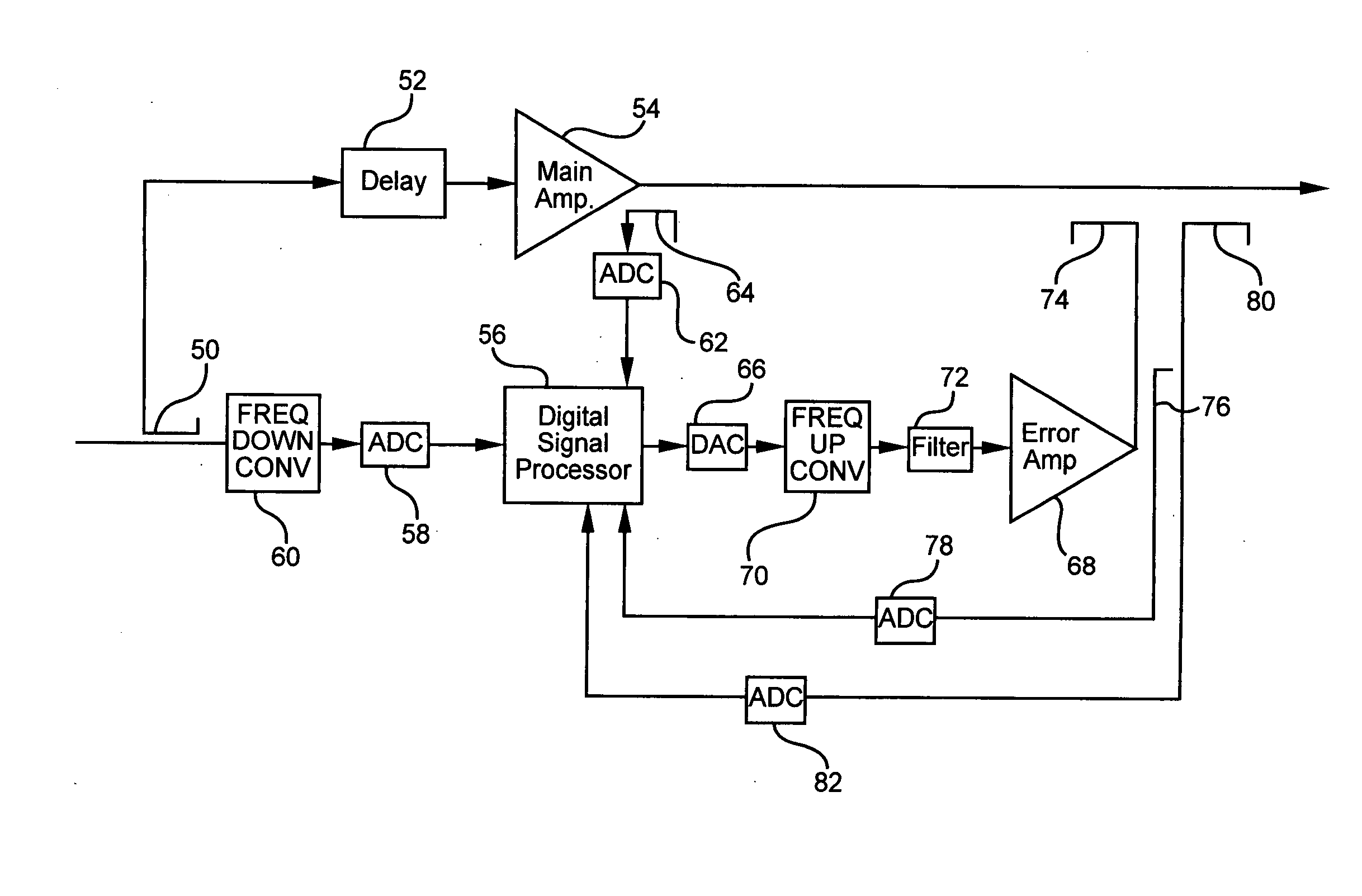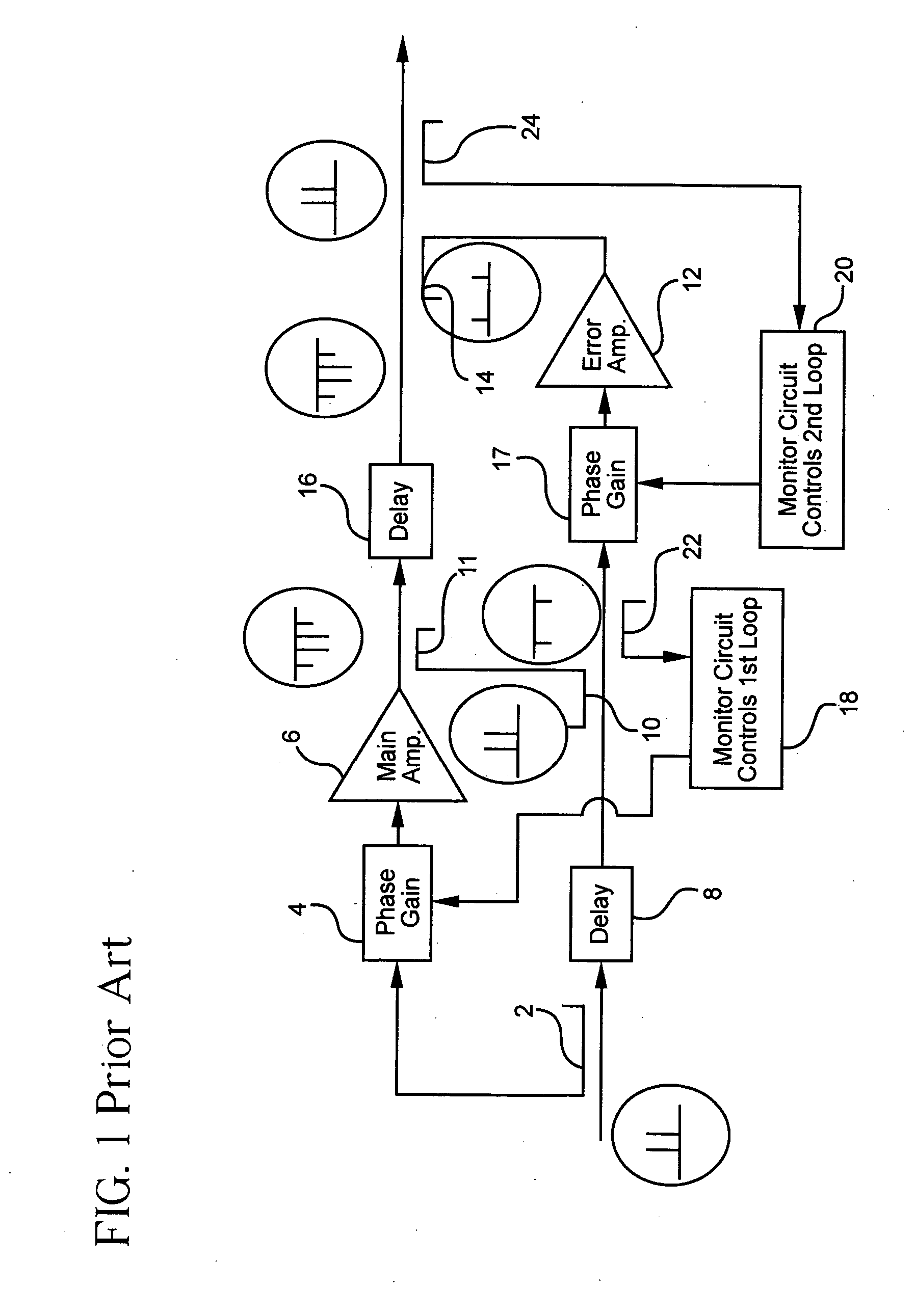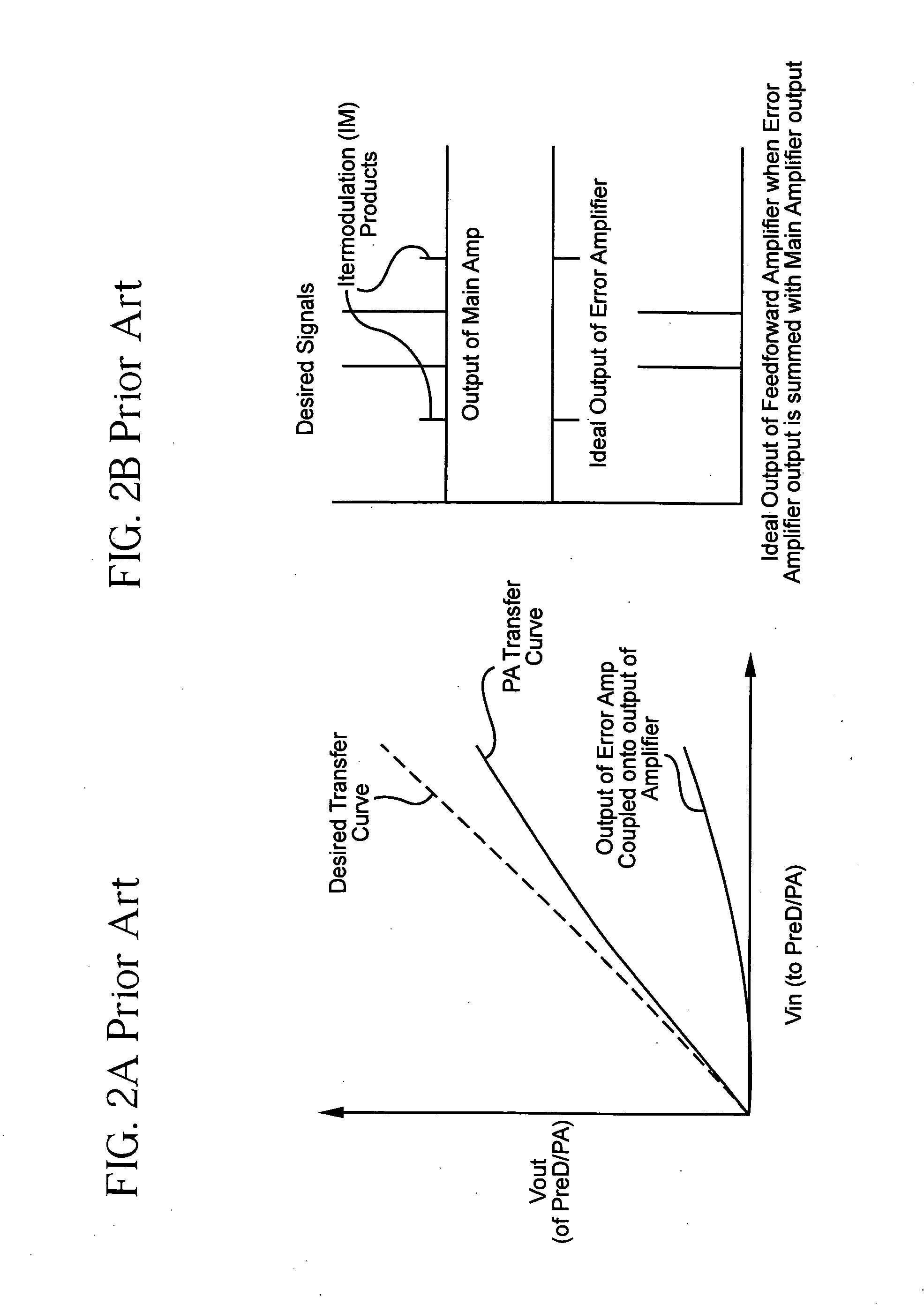Digital signal processing based implementation of a feed forward amplifier
a digital signal processing and amplifier technology, applied in the direction of amplifiers, amplifier modifications to reduce noise influence, electrical equipment, etc., can solve the problems of increasing the distortion of the signal, so as to reduce the distortion, reduce the fabrication cost, and increase the speed
- Summary
- Abstract
- Description
- Claims
- Application Information
AI Technical Summary
Benefits of technology
Problems solved by technology
Method used
Image
Examples
Embodiment Construction
[0044] The present invention combines elements of feed forward amplifiers, digital pre-distortion amplifiers and digital signal processing (DSP) techniques. The present invention offers a number of improvements to conventional feed forward power amplifier architecture. The circuitry and methodology of the present invention involve manipulating digital signals derived from RF (radio frequency) frequencies so as to simulate the distortion in a main amplifier. The distortion signal is then amplified in an error amplifier and subtracted from the output of the main amplifier to leave the desired signal. The circuitry and methodology of the present invention incorporate elements of both digital pre-distortion and feed forward architecture in order to reduce the problems with both and to take advantage of the great strides that have been made in digital signal processing both in cost and speed.
[0045] Turning initially to FIG. 4 of the drawings, one embodiment of a feed forward amplifier f...
PUM
 Login to View More
Login to View More Abstract
Description
Claims
Application Information
 Login to View More
Login to View More - R&D
- Intellectual Property
- Life Sciences
- Materials
- Tech Scout
- Unparalleled Data Quality
- Higher Quality Content
- 60% Fewer Hallucinations
Browse by: Latest US Patents, China's latest patents, Technical Efficacy Thesaurus, Application Domain, Technology Topic, Popular Technical Reports.
© 2025 PatSnap. All rights reserved.Legal|Privacy policy|Modern Slavery Act Transparency Statement|Sitemap|About US| Contact US: help@patsnap.com



